“Give me ten minutes,” said Peter Lang. “You don’t have ten minutes,” his wife Nancy replied. The black sky was aglow. The groggy couple, both in their mid-seventies, had to shift into high gear to survive. It was 10:30 p.m., and by daybreak the glow would be called the Tubbs Fire — one of the deadliest in history.
They left the house. Nancy and the three dogs, Luna, Bob and Marty, drove off in her Chevy Suburban. Peter jumped in his truck. What did they leave in the house? Two lifetimes of things. Both animal and nature obsessed, they had amassed deep collections of books, art, a world class mineral collection, photo albums that included the archives of Otto Lang, a famous Hollywood director who was Peter’s father, archives dating back to 1935, first edition books, tax returns. Like so many that night, they lost everything.
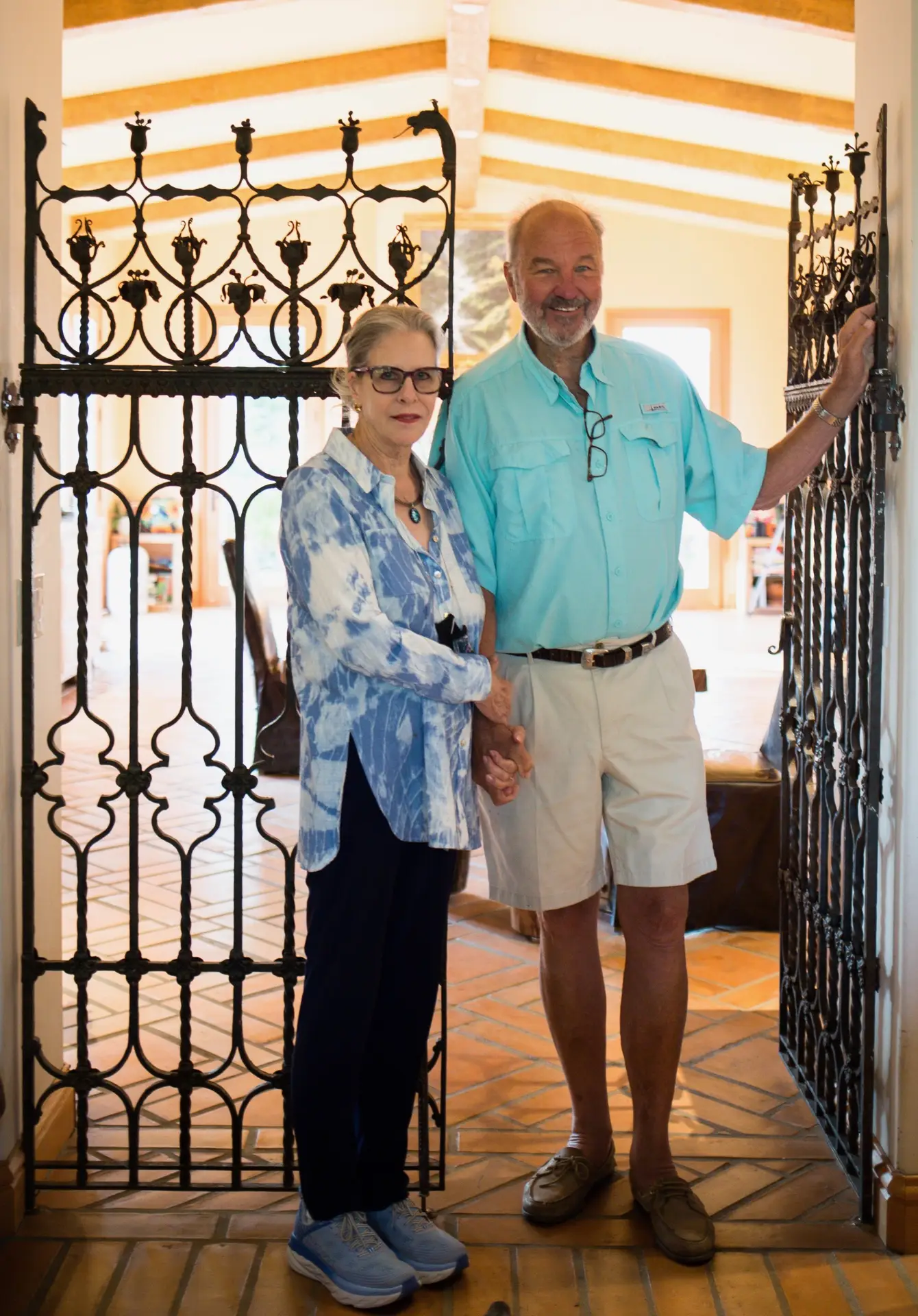
As they drove down their narrow driveway to a wider Porter Creek Road, the heat from the flames melted Nancy’s windshield wipers. They headed to Safari West, the animal sanctuary/glamping resort they have run for more than twenty years, to meet up with a sheriff and highway patrol officer who were starting to evacuate the guests. Once all ninety of them were following the highway patrol to safety, Nancy got back in her car. She assumed that Peter did too.
He stayed behind. Peter purchased this 400-acre plot of rolling verdant Sonoma hillside back in the late ‘80s to give a home to his growing collection of exotic wildlife. Perhaps inspired by his childhood playing on Hollywood back lots, he set out to convert a cattle ranch into a world class conservation breeding facility that would be a popular tourist destination, as well. Early on, he met Nancy Schofield, the lead curator and raptor-specialist at the San Francisco Zoo; they fell in love, got married and created Safari West. They lived on this property for twenty-five years, until they purchased their dream home, set on 200 acres less than a mile up the road.
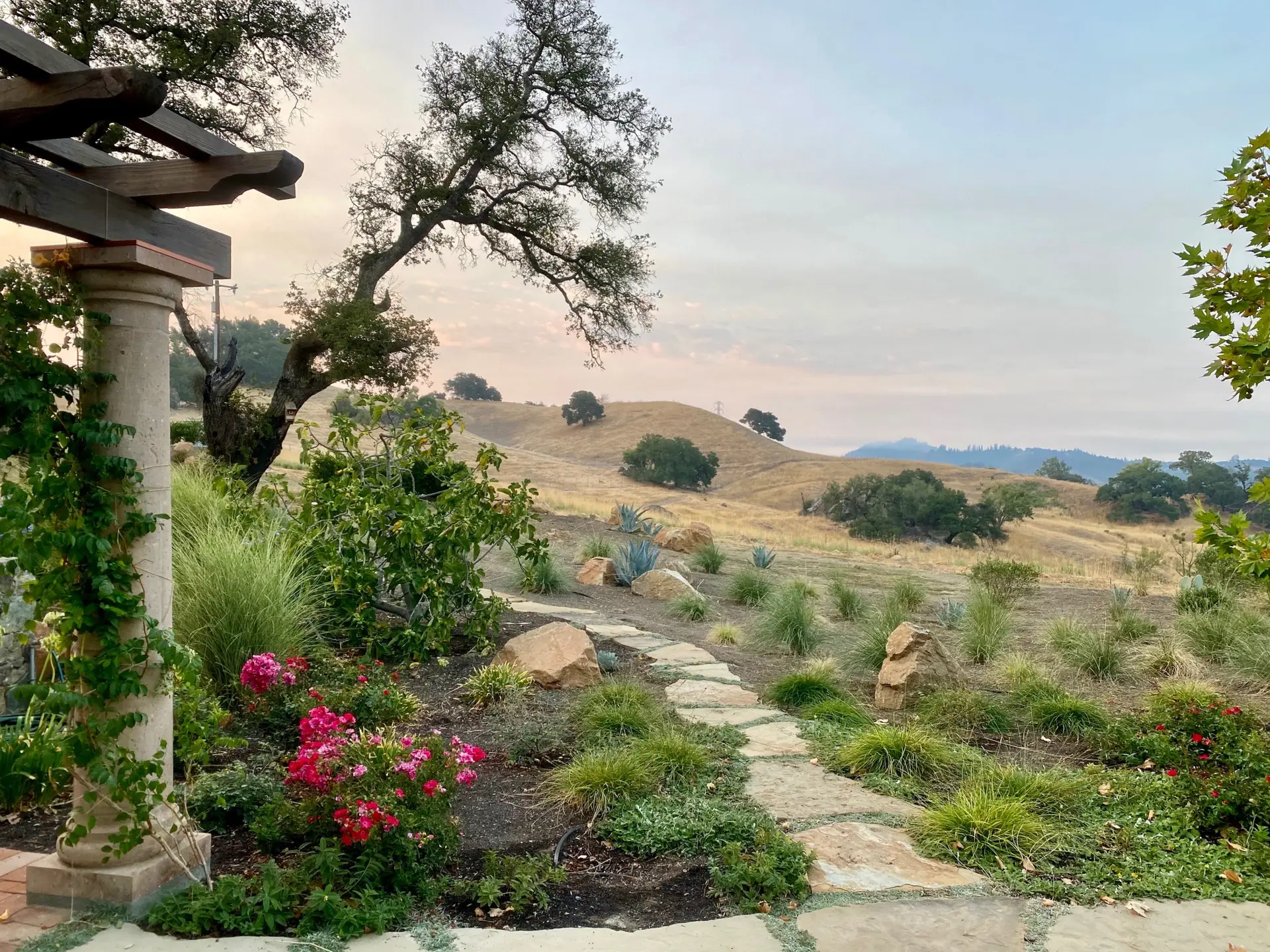
Wearing a wetted flannel hoodie to protect himself from the flying embers, Peter could see their home in flames. To fight the flames, he started with garden hoses and then moved on to tractors, backhoes and forklifts. He singlehandedly fought the flames for 10 hours. Not one of the 1,000 animals perished.
The fire burned so hot it cracked a large rock formation. All that remained of the house was the skeleton of a washer and dryer, olive trees and Peter’s 2009 Bentley, which suffered no damage at all.
After three years and months of sheltering-in-place because of Covid-19, Nancy and Peter Lang have rebuilt their home, the guest house and two barns.
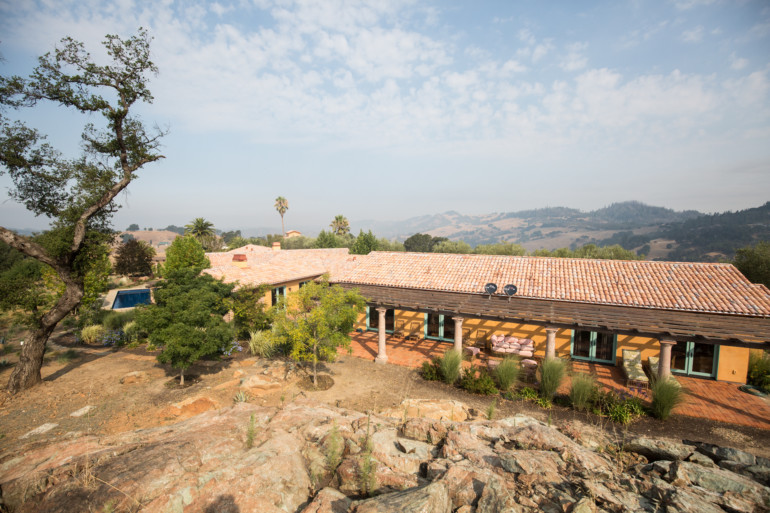
While they loved the 4,000 square foot Cliff May-inspired home they had purchased in 1989, this time they chose “a 100% change in style and architecture,” Nancy says. “We used the original footprint, and went from a board-and-bat ranch house with a concrete tile roof to a Mediterranean feel.” Inspired by a television show on traveling to Turkey, they chose the color palette for the exterior, a sunset gold with teal blue window trim and copper gutters. The Langs sourced conterra stone from a little town north of Guadalajara for the columns — and bought so much of the stone that it filled eight semi-trucks — and tiles from Tecate. They found a woodworker in Tijuana to carve the front door. “So, yes, you’d say there’s a big Mexican influence,” Peter says, “except all that influence is from old Italian houses.”
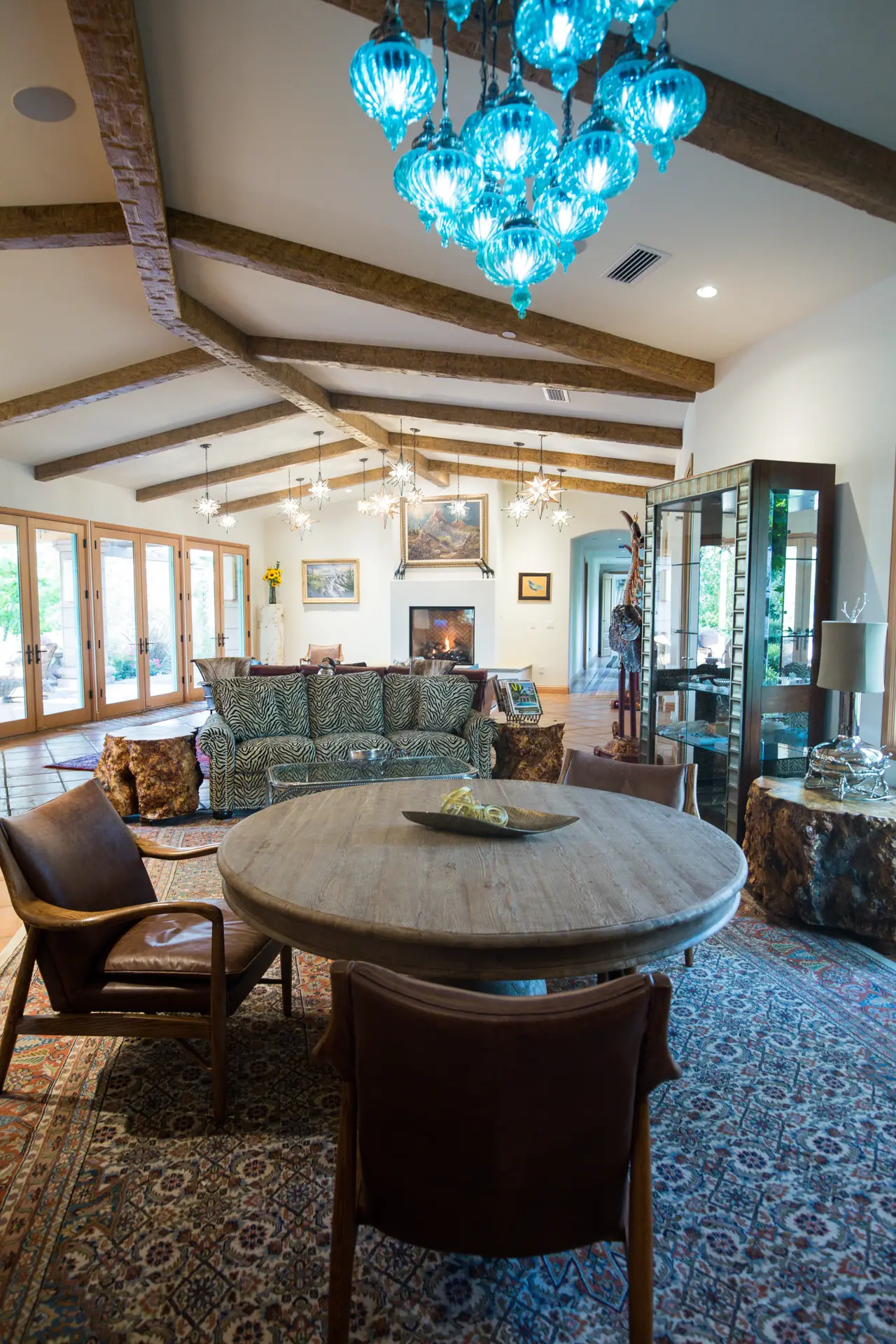
Keeping to the original floor plan, the Langs made a few tweaks. Peter made the entry into the house much deeper than it was originally. The front door opens to a great room and beyond, glass doors reveal a gem-blue pool fronting miles of open hills in the distance. Peter brought in thirty-two Moravian stars, also sourced from Mexico, and scattered them throughout the house. He is drawn to the ancient mathematical history of these stars, as he explains they were a geometry problem for students in a German college. When they could do the math to make these stars, they would graduate.
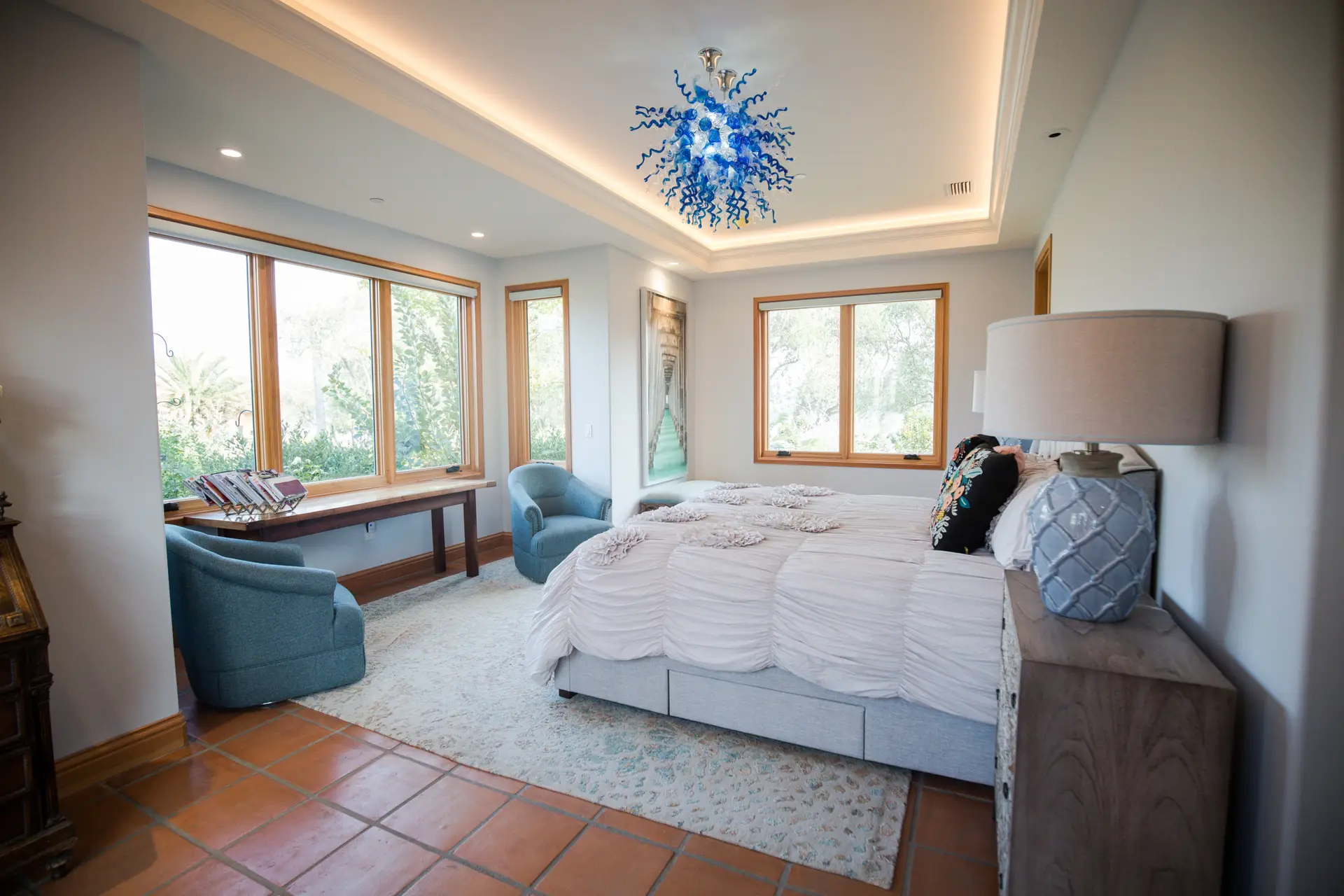
Given the clean slate opportunity, the Langs turned three bedrooms into two adjoining bedrooms with en suite bathrooms. They flipped the blueprint to the sunny side of the house with views of the gardens and Sonoma hillsides.
As it did before the fire, the kitchen table seats fourteen. Nancy wanted something bright and cheerful; she chose yellow for the ceiling and peachy orange for the walls. “I love the kitchen, I absolutely adore it, even though we can seat more people than I want to seat,” she says. Peter adds, “I’m deaf in my left ear, so if we have more than three couples, I’m out of the party. It’s all about Nancy, three couples and me.” And a really big table. Peter designed and milled the kitchen table, which is the centerpiece of the room; it seats 16, resembling ranch kitchens at the turn of the 19th century, when ranches fed workers and family alike. The kitchen counter is made of a walnut tree that had fallen at Safari West.
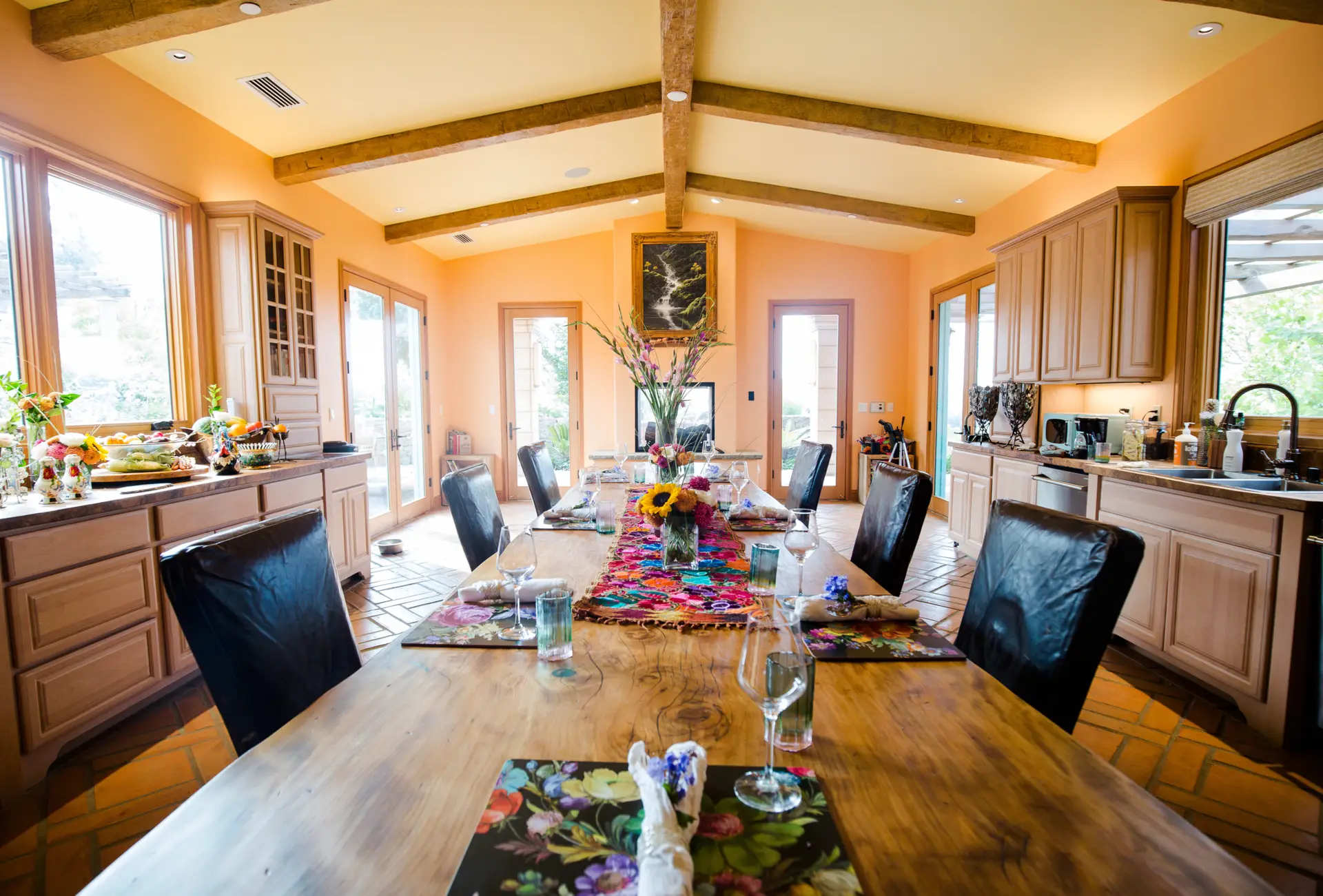
They commissioned a red leather couch from Fiji and built around it. “I left absolutely no walls between the living room, the family entertainment area and a little round table I’m using as my office,” Peter notes. The idea is that you walk through the living room to get to the family area, to get to the kitchen, to get to the outside living room or the outside dining space — an open floor plan with sitting areas throughout. “We have yet to sit on the living room couch,” Nancy says.
“As I was growing up, I always loved gardens, and my mark of success was going to be when I could afford a full-time gardener,” Peter explains. “Well, I’ve achieved that. I hired a wonderful friend, Todd Cole of Strata Landscape, to do the landscaping, and I’ve got several full-time gardeners at Safari West, and here.”
Nancy had envisioned a very long vanishing edge lap pool. When the bid came in at $450,000, they rethought the plan and happily put in a rectangular manufactured pool. “The more I looked into it, the more sense it made. I bought the shell through a local dealer. We did the digging, we did all the sanding and the dealer came by to make sure we didn’t do anything wrong,” says Peter. “I told Nancy, ‘Your first lap is going to cost 70 grand, and your next lap will be 35 grand. So, you’ve got to do a lot of swimming.’” After three years of nearly daily use, Nancy has proven it’s an investment well made.
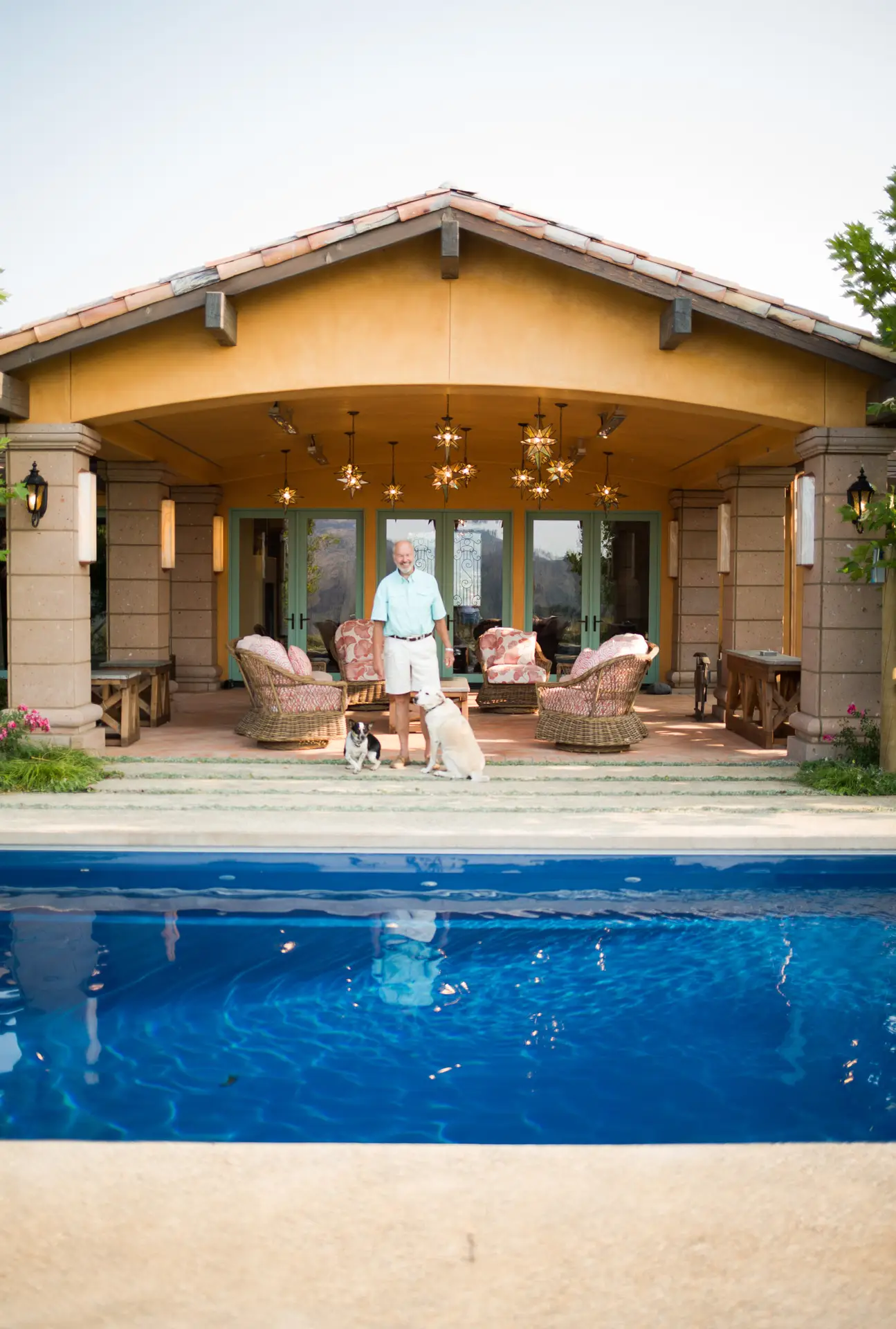
Collecting money from insurance was an adventure, and not a happy one. Peter recounts just one of the issues he still scratches his head over. His advice: be sure you know what is insured and what is not. He assumed a fence that keeps his cattle on his property would be. It wasn’t. “So we had to pull together a crew, and spent well over $40,000 re-fencing. When I talked to the insurance agent, I said, ‘So, we’re not insured with the fence? But if the Watusi and Brahma cattle that are now unfenced walk down onto Porter Creek Road and cause a major collision, we are insured?’ He [insurance agent] goes, ‘Oh, yes. You have liability insurance.’ I said, ‘Wouldn’t it be smarter to pay you for the fence, rather than risk that type of accident?’ These are the problems I’m dealing with today.”
Can it happen again? “Am I worried about a fire? No.” A solid concrete structure in the middle of Manhattan is not fireproof, he explains. “But we built under the new fire codes, which are very stringent and make sense. There are no open vents into the attic space, it’s all closed in. Tile roofs, plaster walls and as now required, built-in sprinklers. Same fire, same circumstances, the house might not burn.” He waits a beat. “Might not.”
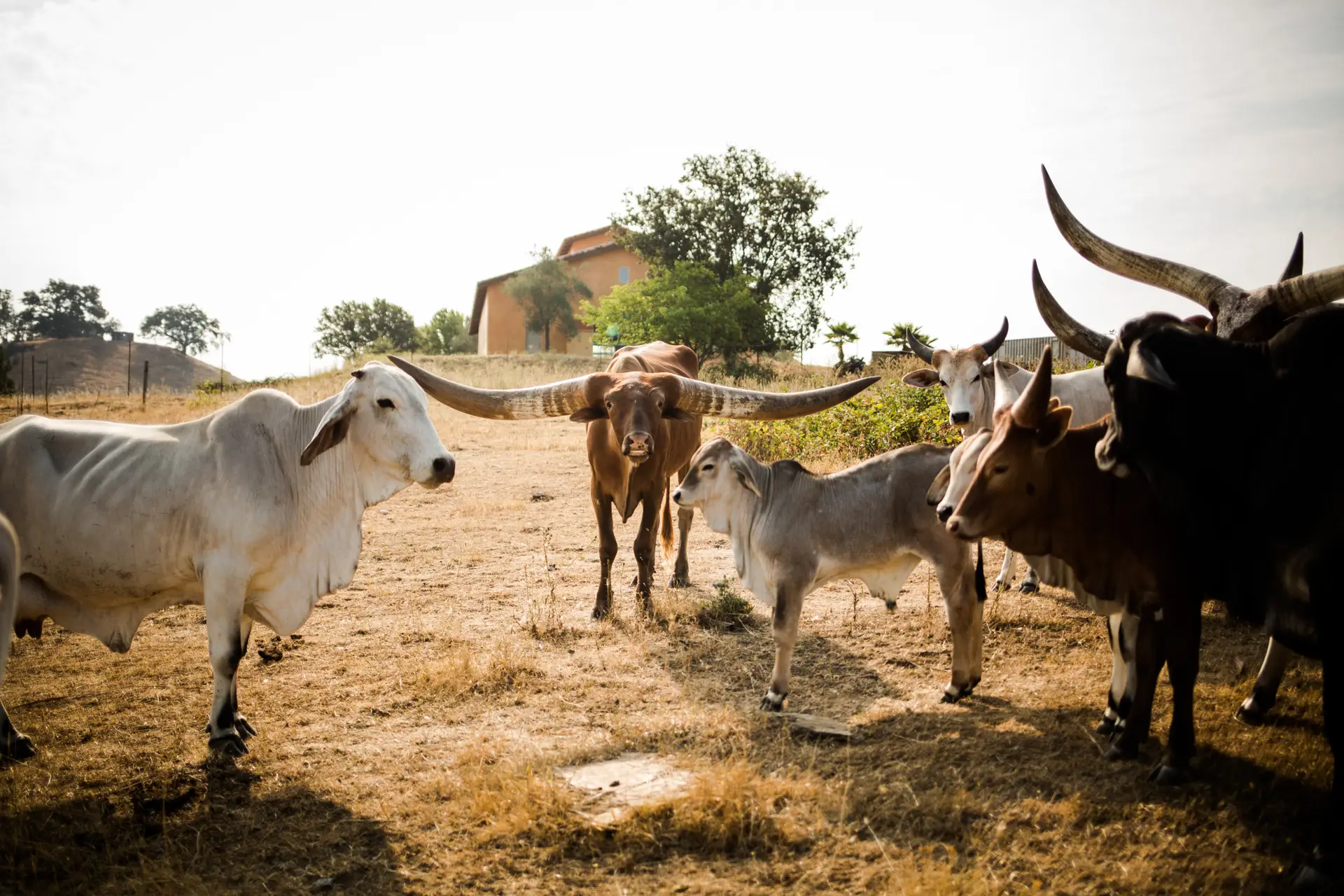
How to Help
There are so many local businesses that need your help right now. For more ways to support local businesses, go here.
More from SPACES:
- A Minimalist Home Close to Friends and Family
- An Eco-Friendly Custom Home on the North Shore: Scott Simpson Design + Build Brings a Dream Home to Life
- Together, Yet Separate: Finding Respite in an Airy Homestead Valley Home
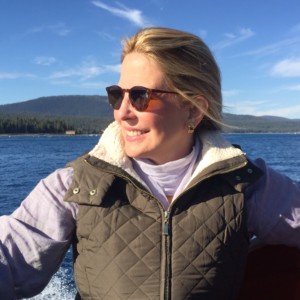 Paige Peterson is a photojournalist who splits her time between Belvedere, California and New York City. As an illustrator, she has collaborated on “A Christmas Carol,” adapted by Jesse Kornbluth, and “Blackie: The Horse Who Stood Still,” which she co-authored with Christopher Cerf. Her next book “Growing Up Belvedere” will be published in October 2020. As a painter, she is represented by Gerald Peters Gallery in New York City and has been honored by The Guild Hall Academy of the Arts in East Hampton. She is a consultant to the Huntsman Cancer Foundation, the Author and Artist in Residence at Literacy Partners, serves on the board of the National Council on U.S.-Arab Relations and has reported extensively on the Middle East. Peterson is also an International Conservation Communication Specialist at Safari West and the Cheetah Conservation Fund Ambassador to the Middle East.
Paige Peterson is a photojournalist who splits her time between Belvedere, California and New York City. As an illustrator, she has collaborated on “A Christmas Carol,” adapted by Jesse Kornbluth, and “Blackie: The Horse Who Stood Still,” which she co-authored with Christopher Cerf. Her next book “Growing Up Belvedere” will be published in October 2020. As a painter, she is represented by Gerald Peters Gallery in New York City and has been honored by The Guild Hall Academy of the Arts in East Hampton. She is a consultant to the Huntsman Cancer Foundation, the Author and Artist in Residence at Literacy Partners, serves on the board of the National Council on U.S.-Arab Relations and has reported extensively on the Middle East. Peterson is also an International Conservation Communication Specialist at Safari West and the Cheetah Conservation Fund Ambassador to the Middle East.
